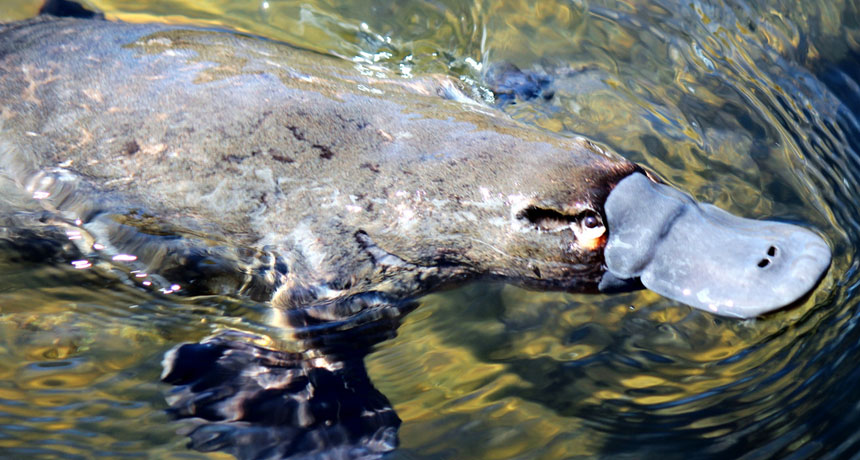Cats and foxes are driving Australia’s mammals extinct

The platypus is threatened by a number of factors, including predation by cats and foxes.
Trevira1/Flickr (CC-BY-NC 2.0)
- More than 2 years ago
Of the 84 mammal species that are known to have gone extinct since the 1500s, 35 percent are from Australia, a new study finds. Since the 1840s — less than 60 years after the arrival of Europeans — the continent has lost one or two species every decade. This rate of loss is especially surprising because Australia is not a place you might expect a lot of extinctions: Except for a few spots along the coasts, the continent is sparsely settled. There are large swaths of untouched country. And the nation is fairly affluent. So what happened?
John Woinarski of Charles Darwin University in Darwin, Australia, and colleagues have an unexpected answer. They place most of the blame for the loss of those mammals, and the continued decline of many other species, on the spread of foxes and feral cats, along with changing patterns of fires. (Aboriginal people managed the land with fire for thousands of years, but that stopped when Europeans arrived.) The researchers make their case February 9 in the Proceedings of the National Academy of Sciences.
The cats and foxes are prime suspects for a few reasons. Mammal losses began in the southeastern portion of the continent in the 1840s, spread to central Australia in the 1890s and decades later to northern Australia, the researchers note. “Much of this timing was coincident with the continent-wide spread of the introduced cat Felis catus and the slightly later and only marginally less extensive spread of the introduced red fox Vulpes vulpes,” they write. Also, seven once-common species that have disappeared from Australia can still be found on islands where cats and foxes have never been introduced.
And unlike in other parts of the world where large mammals have been the most likely to go extinct, in Australia the “critical weight range” has been a mere 35 grams to 5.5 kilograms. “The lost species are ‘meal-sized’ for, and accessible to, these introduced predators,” the team notes.
There are other factors that have contributed to the devastation: Cane toads spreading across the northern reaches of the continent have poisoned predator species, such as the northern quoll. A transmissible cancer is killing off Tasmanian devils. A possum species lost nearly half its range to a particularly devastating fire in 2009. The list goes on — dogs, pollution, drought, habitat destruction, introduced diseases and even climate change. But the effects of the cats and foxes have overwhelmed all those other causes.
Another recent study, published February 2 in the Journal of Biogeography, shows the true extent of the danger that cats pose to Australia’s native wildlife. Tim Doherty of Edith Cowan University in Joondalup, Australia, and colleagues tallied up all the reports of what cats had eaten and came up with a list of 400 vertebrate species. The one bright note was that kitties appear to prefer to eat rabbit — another devastating invasive species. But when there are no rabbits, nothing else is really safe from the predators.
What is to be done? There have been some successful efforts at reducing the fox population, the authors of the PNAS study note. And threatened mammal species have benefitted from an expansion of private conservation areas in recent decades. But no one has figured out how to control the feral cat population without harming people’s pet cats. “It’s a formidable challenge,” the team writes.






